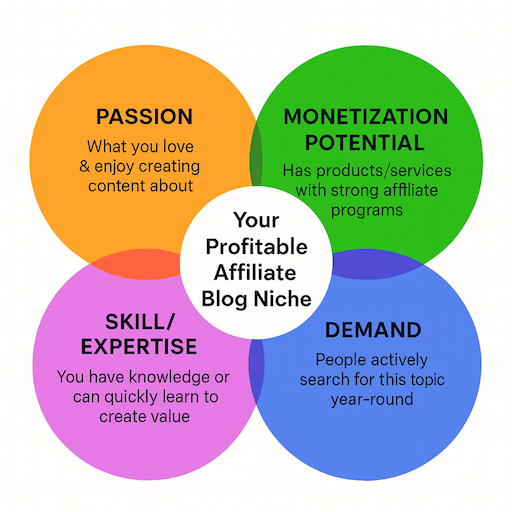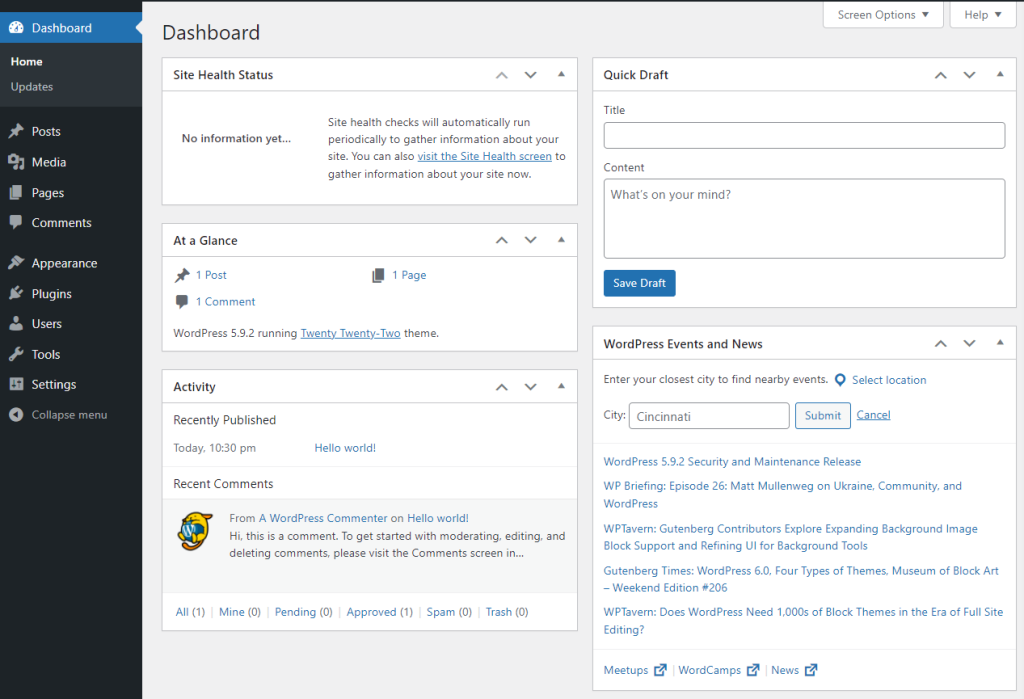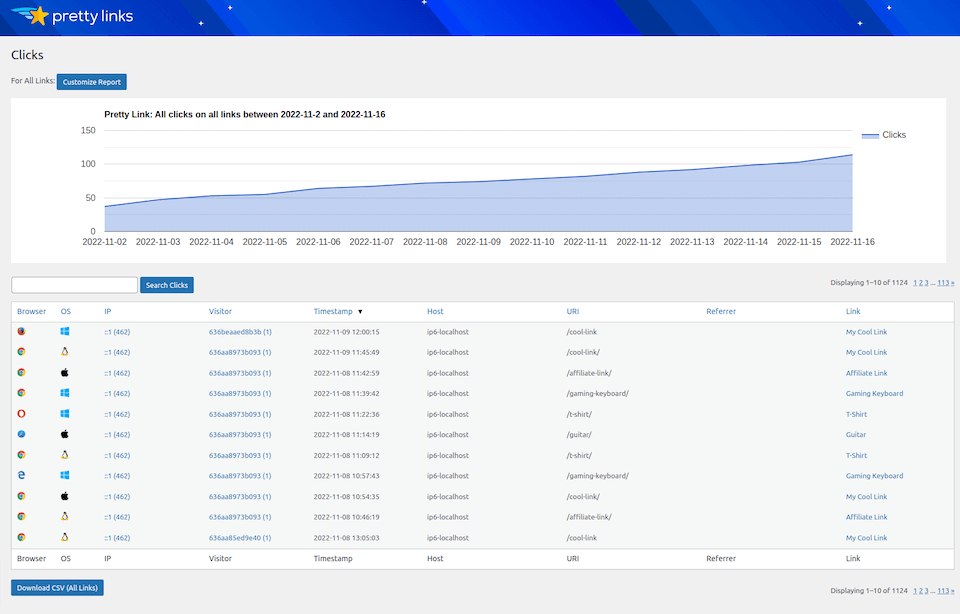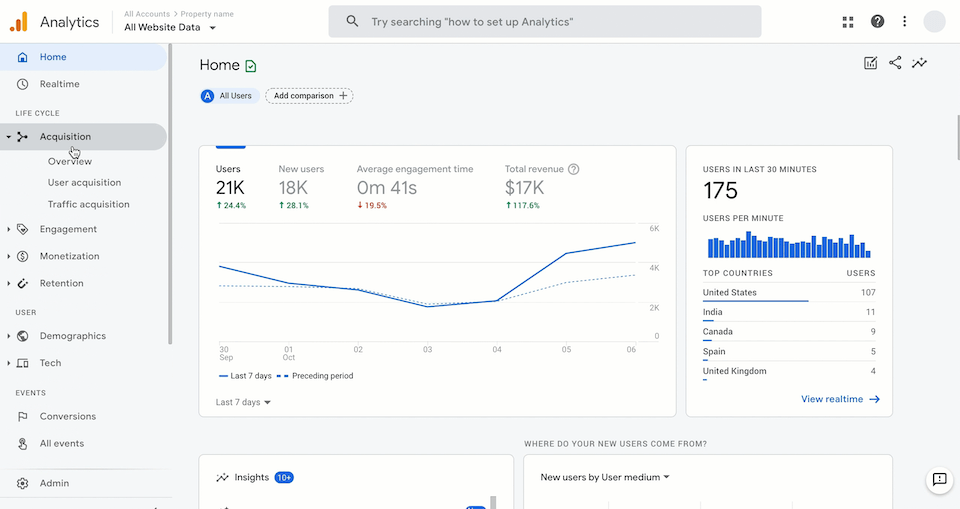How to Create a Blog for Affiliate Marketing
Affiliate marketing is one of the most accessible ways to make money online. You promote products or services through unique tracking links and earn a commission when someone makes a purchase through your link. Among the various platforms you can use to promote affiliate products, a blog stands out as one of the most powerful and sustainable. If you’ve ever wondered how to create a blog for affiliate marketing, the process is easier than it looks and offers long-term potential when done right. A well-built blog allows you to create valuable content, build a loyal audience, and generate passive income over time. In this guide, we’ll walk you through every step of creating a successful blog for affiliate marketing, from choosing your niche to publishing high-converting content and scaling your results.
Define Your Niche and Audience
Your niche is the foundation of your entire blog. It determines who you’re writing for, what products you promote, and how you structure your content. Picking the right one can make the difference between slow growth and fast, focused traction.
Start by thinking about your own knowledge and interests. Writing regular content becomes a lot easier when you’re working with a topic you already care about. However, passion isn’t enough. A good niche also needs real demand and strong monetization potential.

Look at search data using tools like Google Trends, Ubersuggest, or Ahrefs. You want a topic that people consistently search for, not something overly seasonal or fading in popularity. Then check whether the niche has products or services with affiliate programs. Browse networks like ShareASale, Impact, or Amazon Associates and look for commission rates, product quality, and variety.
| Criteria | Tool / Method | Example Outcome |
|---|---|---|
| Passion | Self-brainstorm | Photography |
| Demand | Google Trends / Ahrefs | 50k monthly searches |
| Monetization | ShareASale / Amazon | 5 programs with 5–30% commission |
Once you’ve chosen a niche, take it a step further by identifying your ideal audience:
- Beginners will need simple guides, definitions, and basic tutorials.
- Product researchers often want comparisons, reviews, and buyer’s guides.
- Advanced users may respond better to detailed tutorials, technical specs, or unique angles.
The more clearly you define your audience, the easier it becomes to create content that actually converts. Instead of writing for “everyone,” you’re addressing specific needs with specific solutions. This clarity makes it easier to plan content, apply to affiliate programs, and follow a clear path if you’re just learning how to create a blog for affiliate marketing.
Choose a Domain Name and Hosting Provider
Your domain name is your brand, and your hosting provider is your foundation. Together, they shape your blog’s identity and performance.
Pick a domain name that reflects your niche, is easy to remember, and is brandable. Avoid hyphens or hard-to-spell words. A good domain should give visitors a clear idea of what your blog is about within seconds. Use services like Namecheap or GoDaddy to find available domains, and always go for a .com if possible, unless you’re targeting a specific country.
For hosting, don’t go cheap at the expense of reliability. A slow or frequently down website will cost you traffic, credibility, and sales. Look for a provider that offers strong uptime (at least 99.9 percent), fast server response times, responsive support, and features like free SSL, automated backups, and cPanel access.
If you’re just starting, shared hosting (Authority Site Hosting) is usually enough. As your site grows, you can consider VPS or dedicated hosting for better control and scalability. To help you choosing you may refer to some of our decision matrix guides:
- Linux vs Windows: Which is the Best OS for VPS hosting
- Best Web Hosting for Affiliate Marketing: Boost Conversions with the Right Host
- Choosing Between Managed and Unmanaged Hosting
Set Up Your Blogging Platform
With your hosting and domain ready, it’s time to set up the actual blog. WordPress is the platform of choice for most affiliate marketers because of its flexibility, control, and huge ecosystem of plugins and themes. It’s also the most recommended platform for building a scalable affiliate marketing blog that you fully control. Most hosting providers offer one-click WordPress installation, so setup takes only a few minutes.

Once installed, choose a fast, mobile-optimized theme. Avoid bloated templates with unnecessary animations or complex features that slow down your site. Page speed is critical for both user experience and SEO.
Then, install a few essential plugins to help you manage content, optimize for search engines, and handle affiliate links:
- Yoast SEO or Rank Math – These guide you through keyword optimization, internal linking, and metadata setup.
- Pretty Links or ThirstyAffiliates – These help you organize, shorten, and track your affiliate URLs.
- Wordfence Security – Adds firewall protection and monitors login attempts.
- W3 Total Cache or LiteSpeed Cache – Improves your site’s performance by caching pages and reducing load times.
- UpdraftPlus – A simple, reliable way to schedule automatic backups to Google Drive or Dropbox.
Finish up by setting your permalink structure (use “Post name” for clarity and SEO), and creating essential pages like About, Contact, Privacy Policy, and Affiliate Disclosure. These pages not only build trust but are also required by many affiliate programs before approving your application.
Plan and Create High-Quality Content
Affiliate marketing only works if people trust your content enough to click your links and take action. A key part of learning how to create a blog for affiliate marketing is understanding the kind of content that builds trust and motivates readers to take action. That means every article on your blog should be designed to either inform, solve a problem, or guide a decision.
| Content Type | Goal | Example |
|---|---|---|
| Review | Conversion | Sony A7 IV Review |
| Roundup | Multiple Offers | 10 Best DSLR Cameras |
| Tutorial | Education + Sales |
How to Shoot Long Exposure Night Photography |
There are several content types that work particularly well for affiliate marketing:
- Product reviews – These should be thorough and balanced. Cover what the product does, who it’s for, its strengths and weaknesses, and whether it’s worth the price.
- “Best of” roundups – Posts like “Best Noise-Canceling Headphones” or “Top Web Hosting for Beginners” help readers compare options and are ideal for linking to multiple affiliate offers.
- Tutorials – These are step-by-step guides that show users how to do something while using the affiliate product as part of the solution.
- Comparison articles – A side-by-side breakdown of two or more products, often with charts or summaries to help readers make a decision.
- Supporting informational content – These might not contain affiliate links directly, but they bring in organic traffic and help establish authority in your niche.
When writing, use long-tail keywords with clear intent, such as “best budget laptop for college students” instead of just “laptops.” Structure your posts with headers, short paragraphs, and bullet points when necessary. Include real-world use cases, pros and cons, and if possible, original images or screenshots.
Above all, your content should feel like it’s genuinely helping the reader. That trust is what leads to clicks, conversions, and long-term success.
Integrate Affiliate Links Properly
Affiliate links are what turn your content into revenue, but adding them carelessly can do more harm than good. You want them to feel natural, helpful, and trustworthy.
Where to Place Links
The most effective placement is inside the body of your content, where it directly relates to what the reader is already focused on. Instead of dumping links at the end of a post, insert them within context. This could be after a product is mentioned, during a recommendation, or as part of a tutorial.
Use descriptive anchor text that matches the intent, like “check out the Bluehost plan I used here” instead of generic phrases like “click this.” You can also test placing callout boxes or buttons for emphasis, especially in reviews or comparisons.
How to Stay Compliant
Every post that includes affiliate links must include a disclosure. This isn’t optional. It’s required by the FTC and by most affiliate programs. Place your disclosure near the top of the page so readers see it before clicking.
A simple sentence like “This post contains affiliate links. If you make a purchase, I may earn a commission at no extra cost to you” usually covers your legal and ethical obligations.
Tools That Help
Managing dozens of affiliate links manually becomes messy fast. Use a plugin like Pretty Links or ThirstyAffiliates to cloak long URLs, organize them into categories, and track click performance. These tools also make it easy to update all instances of a link site-wide if a product or URL changes.

Build Traffic to Your Blog
Once your content is live, you need people to find it. Getting consistent, high-quality traffic takes time, but it’s the only way to grow your affiliate revenue.
Focus on SEO First
Search engine traffic is the most valuable source for affiliate blogs because it brings in people who are already looking for information or ready to buy. The most successful affiliate marketing blogs rely heavily on SEO to drive consistent, targeted traffic that converts.Start with on-page SEO. Optimize your titles, headings, URLs, and meta descriptions. Use schema markup if possible, and make sure your images have alt text.
Also work on internal linking. Linking from one post to another keeps visitors on your site longer and helps search engines understand your content structure.
Expand with Off-Page Strategies
To climb in search rankings, you need backlinks from reputable websites. This doesn’t happen overnight. You can build them through guest posting, blogger outreach, and by creating content that naturally earns links, like original research, detailed comparisons, or resource guides.
Participate in niche communities, answer questions on forums, and comment thoughtfully on related blogs. While those links may be nofollow, they still help with visibility and networking.
Don’t Ignore Social and Email
While SEO takes time, social media can give your blog an initial push. Share your articles in relevant groups or create short-form content based on your blog posts. For example, turn a list of tips into a Twitter thread or a product roundup into a short Instagram carousel.
Building an email list from the beginning is also a smart move. Even a simple opt-in form offering a free resource, like a checklist or guide, can help you capture subscribers who return for more content and eventually convert.
Monitor Performance and Optimize
Tracking performance allows you to understand what’s working and what needs improvement. Use Google Analytics to monitor traffic sources, bounce rates, and user behavior. Pay attention to which pages attract the most traffic and how users navigate your site.

Your affiliate programs should provide reporting tools that show which links are getting clicks and generating sales. Use this data to identify top-performing content and refine your approach.
Conduct A/B tests on elements like call-to-action wording, button color, or link placement to optimize conversions. Update older posts regularly to keep them relevant, especially if products change or new competitors appear. Make sure your internal links are updated and working, and consider improving the quality of underperforming posts.
Stay Compliant and Build Trust
Affiliate marketing is a business, and like any business, there are rules you need to follow. Building trust with your audience also depends on your transparency and ethical practices.
Always disclose your affiliate relationships clearly. This is required by law in many countries, including under the FTC in the United States. Your readers should never feel misled about your recommendations.
Avoid misleading headlines, fake urgency, or promoting poor-quality products just for the commission. Your reputation is more valuable than any short-term payout. Build your blog into a resource that people return to and recommend.
Over time, trust and transparency will help you grow your authority, build relationships with brands, and unlock higher-paying affiliate opportunities.
Scale and Diversify
Once your blog starts gaining traction, you can begin to scale your efforts. You might publish content more frequently, expand into related sub-niches, or outsource parts of your workflow such as writing, SEO, or editing. Many high-earning affiliate marketing blogs scale by targeting multiple sub-niches under the same broader topic or by branching out into complementary categories.
Joining multiple affiliate programs gives you flexibility and helps you compare which offers convert best. You might also apply to high-ticket affiliate programs or recurring commission models that pay monthly rather than one-time payouts.
Explore new traffic sources like paid advertising once your content and funnel are optimized. Build partnerships with other bloggers or influencers in your space to grow your reach. Consider adding additional monetization strategies such as digital products, courses, or sponsored content.
Scaling your affiliate blog is about refining what works, delegating where needed, and continually providing value to your audience.
Conclusion
Knowing how to create a blog for affiliate marketing is the first step, but growing it into a long-term business requires consistency, effort, and strategy. By choosing a profitable niche, building valuable content, integrating affiliate links strategically, and focusing on traffic and trust, you can grow a blog that generates steady income and opens the door to other online opportunities. Stay consistent, treat it like a business, and keep learning from your results.



